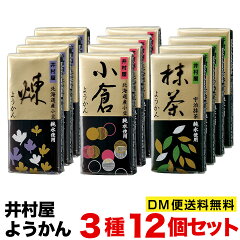論文No2205
Treatment Outcomes of Immune-Related Cutaneous Adverse Events
Gregory S. Phillips, BS1; Jennifer Wu, MD1,2,3; Matthew D. Hellmann, MD1,4; Michael A. Postow, MD1,4; Naiyer A. Rizvi, MD5; Azael Freites-Martinez, MD1; Donald Chan, EdM1; Stephen Dusza, DrPH1; Robert J. Motzer, MD1,4; Jonathan E. Rosenberg, MD1,4; Margaret K. Callahan, MD, PhD1,4; Paul B. Chapman, MD1,4; Larisa Geskin, MD5; Adriana T. Lopez, BA5; Vanessa A. Reed, MS5; Gabriella Fabbrocini, MD6; Maria Carmela Annunziata, MD6; Oluwaseun Kukoyi, BS1; Aliyah Pabani, MD5; Chih-Hsun Yang, MD1,2,3; Wen-Hung Chung, MD, PhD1,2,3; Alina Markova, MD1,4; and Mario E. Lacouture, MD1,4
JCO, Vol. 37, No. 30, October 20, 2019, pp. 2746–2758
|
|
<目的>
この研究の目的はICI治療における免疫関連皮膚有害事象(ircAEs)で
腫瘍皮膚科クリニックに紹介された患者に対する局所、全身治療の効果を検討することである。
<方法>
2014年1月1日から2017年12月31日に3つの3次救急病院、がんセンターで皮膚科医によって
評価されたircAEsを有する患者の後ろ向き解析を電子カルテで行った。
臨床病理的特徴、皮膚科治療の予後、採血データを解析した。
<結果>
全体で285名(年齢中央値65歳 [range, 17 to 89 years])で427のircAEsが含まれた:
掻痒症(n = 138; 32%)、斑点状丘疹(n = 120; 28%)、乾癬状皮疹 (n = 22; 5%)、他(n = 147; 34%)である。
免疫チェックポイント阻害薬のクラスはircAEsのフェノタイプと関連していた(P = .007)。
斑点状丘疹は併用療法を受けた患者に優位であった。
ircAEsの重症度は皮膚科医の介入で有意に減少した
(mean Common Terminology Criteria for Adverse Events grade: 1.74 v 0.71; P < .001)。
介入は局所的ステロイド、経口痒み止め、全身性免疫修飾薬である。
88名のircAEs(20%)は全身性免疫修飾薬で管理されていた。
このうち、22名(25%)は持続あるいは悪化した。
ステロイド抵抗性ircAEsの7名では、リツキシマブやデュピルマブといった免疫調節療法で改善が見られた。
血清インターロイキン6(IL-6)は65名中34名(52%)で増加していた。
グレード3以上のircAEsは好酸球絶対値増加(odds ratio, 4.1; 95% CI, 1.3 to 13.4)、
IL-10増加(odds ratio, 23.8; 95% CI, 2.1 to 262.5)と関連していた。
血清の平均免疫グロブリンEレベルはグレードのひどいircAEsで高く、
1,093 kU/L (grade 3), 245 kU/L (grade 2), and 112 kU/L (grade 1; P = .043)であったようです。
<感想>
多くの免疫関連皮膚有害事象(ircAEs)は症状、フェノタイプをターゲットにした皮膚科治療に反応したようです。
ステロイド抵抗性の病態にはバイオ製剤が有用であったようです。
好酸球、IL-6, IL-10, Ig-Eの増加はircAEsと関連していたようです。
|
|
The aim of the current study was to report the efficacy of topical and systemic treatments for immune-related cutaneous adverse events (ircAEs) attributed to checkpoint inhibitors in an uncontrolled cohort of patients referred to oncodermatology clinics.
METHODS
A retrospective analysis of patients with ircAEs evaluated by dermatologists from January 1, 2014, to December 31, 2017, at three tertiary care hospitals and cancer centers were identified through electronic medical records. Clinicopathologic characteristics, dermatologic therapy outcome, and laboratory data were analyzed.
RESULTS
A total of 285 patients (median age, 65 years [range, 17 to 89 years]) with 427 ircAEs were included: pruritus (n = 138; 32%), maculopapular rash (n = 120; 28%), psoriasiform rash (n = 22; 5%), and others (n = 147; 34%). Immune checkpoint inhibitor class was associated with ircAE phenotype (P = .007), where maculopapular rash was predominant in patients who received combination therapy. Severity of ircAEs was significantly reduced (mean Common Terminology Criteria for Adverse Events grade: 1.74 v 0.71; P < .001) with dermatologic interventions, including topical corticosteroids, oral antipruritics, and systemic immunomodulators. A total of 88 ircAEs (20%) were managed with systemic immunomodulators. Of these, 22 (25%) of 88 persisted or worsened. In seven patients with corticosteroid-refractory ircAEs, improvement resulted from targeted biologic immunomodulatory therapies that included rituximab and dupilumab. Serum interleukin-6 (IL-6) was elevated in 34 (52%) of 65 patients; grade 3 or greater ircAEs were associated with increased absolute eosinophils (odds ratio, 4.1; 95% CI, 1.3 to 13.4) and IL-10 (odds ratio, 23.8; 95% CI, 2.1 to 262.5); mean immunoglobulin E serum levels were greater in higher-grade ircAEs: 1,093 kU/L (grade 3), 245 kU/L (grade 2), and 112 kU/L (grade 1; P = .043).
CONCLUSION
Most ircAEs responded to symptom- and phenotype-directed dermatologic therapies, whereas biologic therapies were effective in patients with corticosteroid-refractory disease. Increased eosinophils, IL-6, IL-10, and immunoglobulin E were associated with ircAEs, and they may represent actionable therapeutic targets for immune-related skin toxicities.


